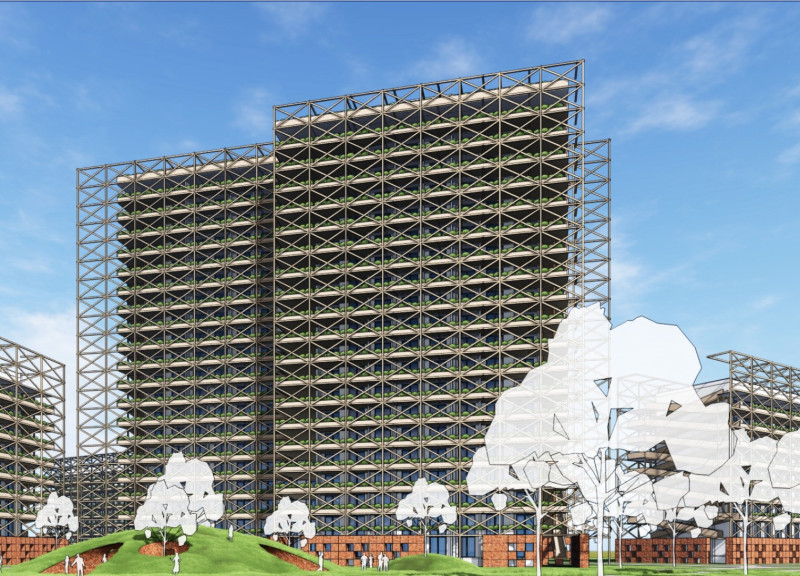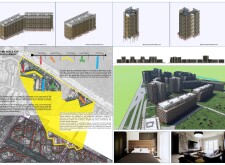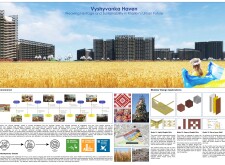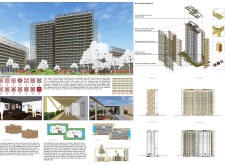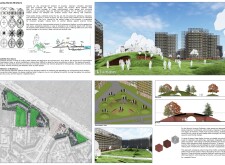5 key facts about this project
### Overview
Located in Kharkiv, Ukraine, the Vyshyvanka Haven project addresses both the cultural heritage and contemporary needs of the urban environment amid ongoing sociopolitical challenges. By integrating sustainable architectural practices, the development aims to foster community resilience and reflect the rich cultural narratives of Ukraine. The design serves as a response to the complexities of urban regeneration by harmonizing historical elements with modern requirements.
### Heritage and Modernity Integration
The project seeks to create a dialogue between Ukraine's traditions and its urban identity through architectural expression. Drawing inspiration from the "vyshyvanka," a symbol of cultural identity, the design emphasizes storytelling as a means of healing and renewal. This integration includes elements that celebrate Ukrainian motifs while accommodating modern living demands. The design adheres to global Sustainable Development Goals, employing eco-friendly practices and materials that contribute to community health and long-term sustainability.
### Material Choices and Structural Design
Material selection plays a critical role in enhancing the project’s sustainability and resilience. Cross-laminated timber (CLT) serves as a primary building material, providing both aesthetic appeal and natural insulation. Reclaimed timber reinforces the project's commitment to sustainability by utilizing local resources. Concrete is incorporated into foundational elements, ensuring structural integrity, while a metal framework supports modular construction techniques. This combination of materials not only aligns with environmental considerations but also responds effectively to the climatic conditions of the region, optimizing living comfort.
The design outcomes foster a sense of community through shared spaces, emphasize adaptability for future needs, and incorporate visual and cultural symbolism reflective of local identity. Modular designs enhance flexibility and urban comfort, while landscaping focuses on creating safe communal areas that promote health and well-being.


